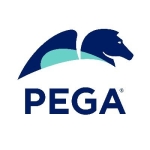What is our primary use case?
We essentially use Informatica Axon to set up a data governance framework for a corporation, usually a medium-sized or large organization.
What is most valuable?
The dictionary, the search, and the ratings are without a doubt the most beneficial components of this solution.
Socializing data governance is one of the examples, but I'm not sure what the others were. For instance, if you locate a specific data attribute, you can grade its accuracy by assigning it a star rating between 0 and 5.
When someone else conducts a search, they might discover whether employees at the company believe the data to be of high quality.
In terms of additional features, I believe it is quite rich. As I previously stated, it is a fairly mature product.
What needs improvement?
The main issue probably has nothing to do with end users, but installation can definitely be simplified. Also, I believe that this is something that they are already working on it, but it needs to be provided as a service.
The Microsoft version, Purview, is now available as a cloud service, it must be provided as a service rather than just installation. You do not need to go through the installation, you literally create an account in five minutes. That is something they need to do. I believe that it is already something they are on working on, but I don't believe it has yet been released.
For how long have I used the solution?
Over the past year, I have definitely used Informatica Axon.
I have worked with Informatica Axon for two years.
We are always working with the latest version.
What do I think about the stability of the solution?
Informatica Axon is a stable product.
It's a fairly mature product. For many years, it has been the market leader.
What do I think about the scalability of the solution?
Informatica Axon is a scalable solution.
The smallest organization would have 500 users.
Any of the multinational corporations could be the largest. It's quite pricey.
It is commonly used by large multinational corporations.
It has two or three user interfaces, one for everyone in the organization, one for specific data analysts, and one for IT technical staff.
How are customer service and support?
Like many organizations, technical support responds quickly at times. It can take some time. It's about average, in my opinion. I wouldn't say it's particularly good or bad. It's average.
I would rate the technical support a three and a half out of five.
How would you rate customer service and support?
Which solution did I use previously and why did I switch?
I am just really familiar with Azure DevOps as a deployment technology.
Some of the Azure services, such as Database and Purview, and Informatica tools, such as Axon, and Data Governance, are among the things I am familiar with.
How was the initial setup?
Informatica Professional Services should absolutely perform the installation due to its complexity. Additionally, training is required for end-client configuration. It is not something you can pick up and configure immediately.
Although there is no cloud version of it yet, it can be deployed in the cloud as a virtual machine, or VM.
Axon itself, you normally allow anywhere between five and ten days to conduct the installation configuration together, and that's not elapsed time. It normally takes a week to two weeks to install and configure an initial setup. This is elapsed time, not necessarily man hours. You will always need additional configuration to be done. Although the actual installation and configuration might be completed in a few weeks, getting it ready for use by the organization might take six months.
What about the implementation team?
We do not have a technical team. I was the person who deployed this solution.
It was a challenge, but I did it for the POC.
Informatica Professional Services was consulted when it came time for the client's actual installation.
Axon can typically be present; the technical installation only requires one person, and a second data specialist is typically required for configuration. Normally two. Additional technical setup and data configuration are required.
What was our ROI?
It is definitely high if used properly, but many organizations spend all of the money and then fail to use it to its full potential. It is unquestionably a good investment if used properly.
It depends on how the client uses it.
What's my experience with pricing, setup cost, and licensing?
Pricing is determined by the number of licensed users as well as the number of Core CPUs.
You can imagine how expensive it would be for a company with 10,000 users, but it all depends on how many analyst user licenses they require.
I believe there is a flat fee for the end user.
It is not expensive, but individual licenses are required for technical users, data analysts, data stewards, and the data governance team, which can add up if you have a large number of them.
Different clients may have different licensing costs, but it is based on a yearly paid license. It is renewed every year. There is an initial licensing fee as well as an annual renewal fee.
They are very expensive, and they charge a lot because they know they are number one. I would rate them a five out of five. Five being the most expensive.
What other advice do I have?
I would definitely recommend it. If they can afford it. I strongly advise them to use it. But, before diving into Axon or any of the other governance tools, make sure they understand their data landscape thoroughly because the tool will not help them with that. They will fail if they do not have good data practices in place.
I'm a freelancer, but the consultancy I went through is also independent, but they do have a partner relationship with Informatica, as they do with many vendors.
I would rate Informatica Axon a nine out of ten.
Which deployment model are you using for this solution?
On-premises
Disclosure: My company does not have a business relationship with this vendor other than being a customer.




















